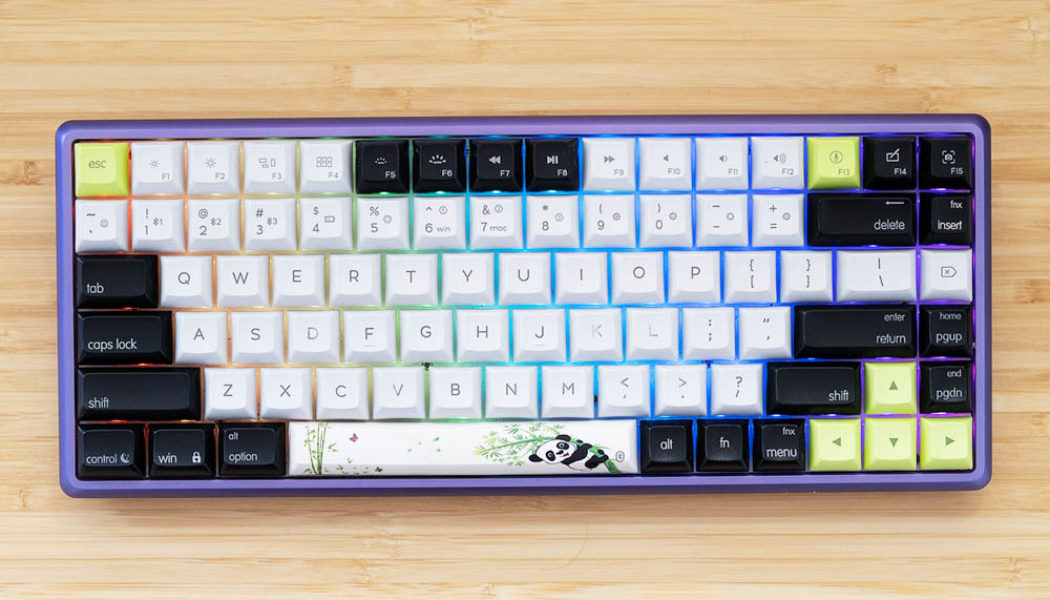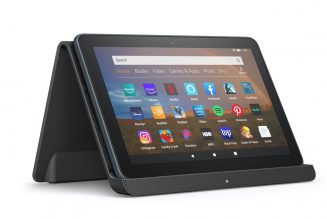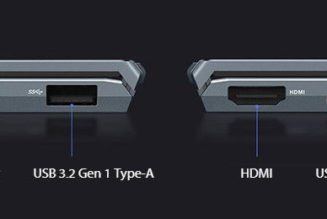When it comes to mechanical keyboards, you generally have the option of playing it safe with a major brand like Corsair or Razer, or buying from smaller enthusiast manufacturers with more interesting designs and often more affordable prices.
Of the two groups, Epomaker definitely falls into the latter. Its recent AK84S wireless keyboard isn’t something you’re going to be able to buy off the shelf from Best Buy, and as yet it’s not listed on the company’s Amazon storefront. Instead, after recently being funded via a Kickstarter campaign, it’s now available to preorder directly from Epomaker’s own site. The company says it’s focusing on shipping keyboards to its Kickstarter backers for now before moving on to orders made via its website in mid- to late September. Shipping can take anywhere from one to two weeks, depending on which method you choose, Epomaker says.
So yes, the Epomaker AK84S isn’t a keyboard you can impulse buy and expect to be clacking away on within 24 hours, and it suffers from a lack of documentation and baffling companion software. But it also has a starting price of just $89 and offers one of the nicest typing experiences I’ve had from a mechanical keyboard. On balance, I think it’s a price worth paying.
Epomaker’s AK84S is available in a wide variety of different configurations, so much so that it’s almost impossible to list every one. As of this writing, however, the cheapest configuration on Epomaker’s website appears to be the version with optical switches, ABS keycaps, and an aluminum frame paired with a plastic case, which comes in at a price of $89. If you want other options, like supposedly more durable PBT keycaps (more on this in a bit), mechanical rather than optical switches, or a fully aluminum case, then you can pay as much as $199.
Switch options include an array of optical or mechanical Gateron-produced Cherry MX clones, including reds, blues, blacks, browns, yellows, silvers, greens, and whites (some have an additional $5 fee). Epomaker also has its own Chocolate-branded switches available with this board, which unfortunately I wasn’t able to try out.
For this review, I’ve been using an AK84S with a full aluminum frame, PBT keycaps with the panda design, and clicky blue Gateron switches. You’ll see in the pictures that my model came with a purple case, which isn’t an option listed on Epomaker’s website, but the company says it plans to eventually make this model more widely available. The all-aluminum version also lacks adjustable feet, which you get on versions with a plastic case.
:no_upscale()/cdn.vox-cdn.com/uploads/chorus_asset/file/22788528/jporter_210816_4716_0006.jpg)
:no_upscale()/cdn.vox-cdn.com/uploads/chorus_asset/file/22788527/jporter_210816_4716_0005.jpg)
The AK84S has a 75-percent layout, which is similar to what you’ll find on most modern laptops. Unfortunately, it’s US (aka ANSI) only, which means you’re out of luck if you prefer a UK or European ISO layout with a bigger Enter key and smaller left Shift. My model came with bottom row keycaps for both Mac and Windows in the box, so I could swap Option and Command for Windows and Alt keys. There’s no physical switch to change the keyboard’s layout between the two operating systems, but you can do so with a button shortcut.
Before I get into any nitty-gritty details, I just want to emphasize how fantastic the core typing experience of the AK84S is. On my all-aluminum model, keypresses had a lovely crisp feeling to them, and the keyboard as a whole felt wonderfully solid to type on. One rough spot is the keyboard’s stabilizers — the mechanism that stops longer keys from wobbling around. They’re a touch on the rattly side, which detracts from the overall quality of the rest of the board. But as a whole, the keyboard is a joy to type on.
While I enjoyed the day-to-day typing experience of the AK84S, I had a few issues with the keyboard over time. For starters, I don’t love the look of Epomaker’s stock keycaps. Each key has so many different functions that the keycaps end up looking really cluttered, and given the option, I’d probably swap them out for a third-party set (there aren’t any particularly non-standard keys you need to be aware of on this keyboard, but pay close attention to the bottom row of any keycap set you buy). The printed legends on my PBT keycaps also weren’t especially durable; after a month of use, the legends on the home row keys had started to fade. Given the option I’d probably opt for the ABS keycaps. ABS as a plastic has a reputation for going shiny over time, but the legends on the versions available for the AK84S are double-shot, which means they’re not going to wear away anytime soon. There’s also an unusual silicone keycap option which I wasn’t able to try, and which costs $65. Maybe it’s a fun novelty? I have no idea.
:no_upscale()/cdn.vox-cdn.com/uploads/chorus_asset/file/22788530/jporter_210816_4716_0008.jpg)
As well as swapping keycaps, the AK84S also features hot-swappable switches, which make it easy to swap out the switches that come with your board without having to use a soldering iron. You use the small metal tool that comes in the box to ease each switch out of its socket, before inserting a replacement. It’s a painless process that gives you the easy option of using a vast array of weird and wonderful switches with the keyboard.
I generally think that if a 75-percent layout is well thought out, then it’s possible to fit every key most people use on a daily basis. But the AK84S’s Windows layout is a little strange. The default screenshot button is unlabeled (it’s F13, in case you’re wondering), and there’s also a whole key dedicated to Insert, a button I’ve never pressed on purpose. Personally, I would have also preferred Home and End keys over Page Up and Page Down, but the former are accessible via a function button.
Thankfully, it’s possible to customize the AK84S’s layout using a piece of companion software, but the lack of documentation makes this an… interesting process. For starters, as of this writing, Epomaker’s website doesn’t actually list the AK84S on its downloads page. But if you choose to download the software available for “SK, GK & NT Keyboards’’ you’ll end up with a program called GK6XPlus, which recognized the AK84S and allowed me to customize its layout (after I asked the company about this, it said it would amend its website). I wouldn’t call it an intuitive piece of software to use, but after a bit of experimenting I ended up with a layout that carried over regardless of which computer I plugged the keyboard into. This software can also customize the keyboard’s RGB backlighting, if you’re into that kind of thing.
I used the AK84S wired over USB-C for the majority of my time with it, but it also includes Bluetooth connectivity and a 4,000mAh battery that Epomaker claims should get you 50 hours of use with its RGB lighting turned on, or as much as 880 hours with it turned off. Unfortunately, I wasn’t able to validate these claims, but in theory they put it far ahead of Keychron’s competing K2, which offers up to 240 hours of use. Like many other wireless keyboards, the AK84S can remember up to three devices it’s been paired with, and you can switch between them easily with keyboard shortcuts.
:no_upscale()/cdn.vox-cdn.com/uploads/chorus_asset/file/22788525/jporter_210816_4716_0003.jpg)
:no_upscale()/cdn.vox-cdn.com/uploads/chorus_asset/file/22788529/jporter_210816_4716_0007.jpg)
I have a lot of small problems with the Epomaker AK84S. I think its default Windows layout isn’t great, the printing on its PBT keycaps is low quality, and the support and documentation you get with the board leaves a lot to be desired. You’re also dealing with a small company that’s shipping all its products internationally, which means you have to be patient with orders in a way that you don’t with a more mainstream brand like Corsair or Razer.
But the core typing experience of the Epomaker AK84S is good enough that I’m willing to forgive basically all of these issues. Yes, its software is clunky, and yes its documentation is bad, but they’re both problems that can be overcome with a little patience and then ignored. Add in other quality-of-life features like Bluetooth support and hot-swappable switches, and you’ve got a board that should last you years. Or at least until you get an itch to buy another keyboard for no apparent reason.
Photography by Jon Porter / The Verge









